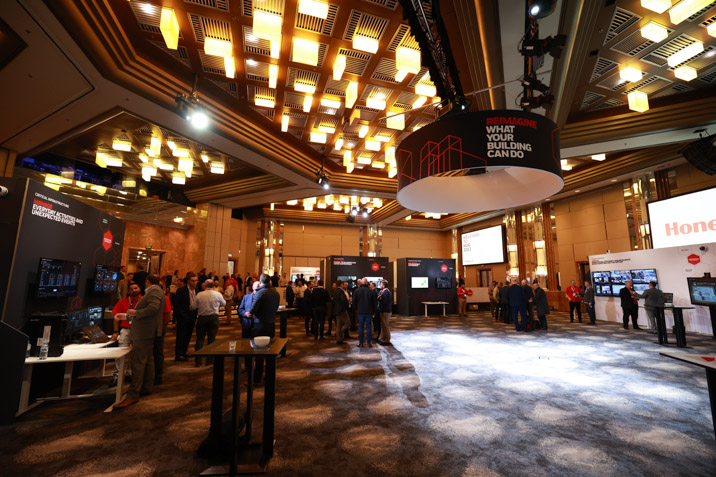The 2023 edition Honeywell Users Group (HUG) conference saw a record 250 customers descend upon Melbourne’s Grand Hyatt, with clients of the building technologies giant told to reimagine what their building can do.
With construction growing by 5.5 percent year on year internationally, property developers and architects are stuck between two competing goals: upgrading existing physical infrastructure and upgrading building services technologies.
Presenting at HUG was Sydney Opera House Sustainability Manager, Emma Bombonato (pictured top), who outlined the work of both the Opera House and Honeywell in a bid for the building to be certified 6 Star Green Star.
Bombonato says the entire Opera House administration holds a responsibility and obligation to conserve the building for future generations, and encourages others to do so, saying we must preserve, retrofit and reimagine existing buildings.
“We need to make meaningful collaborations and partnerships. No single sector can do this alone,” she says.
“If the Opera House can make all of this possible in a 50 year old heritage building, it can be done anywhere. We want to use our platform as a performance space to connect with the hearts and minds of our audience and inspire important conversations that they hope will create positive change.”
Bombonato says that while carbon credits can be invested within major corporations, Building Management Systems (BMS) allow companies to be sustainable in the correct manner.
"Without Honeywell's support in implementing the BMS, we wouldn't have the capability to effectively monitor and control the building in a smart, interactive, real-time manner,” she says.
“This was crucial for several reasons. We introduced the building management control system alongside chiller upgrades, which significantly reduced emissions by approximately nine percent in terms of efficiency."
"This project was a major milestone for us, complementing our efforts to retrofit lights and explore other opportunities for emissions reduction. As part of this initiative, we integrated various meters for water and electricity, granting us a comprehensive insight into every area, including not just venues but also office and back-of-house spaces."

Bombonato is a major advocate for BMS technologies, which she says consolidated much of the data of the Opera House’s operation.
"One of the most valuable aspects of the BMS was its inclusivity. It empowered our operations staff, even those who weren't familiar with the system,” she says.
Honeywell demonstrated how this heritage building could become exceptionally smart, a crucial point we emphasised when submitting to the Green Building Council. We're using smart building technology to future-proof the building, striving for maximum efficiency and continually managing carbon emissions.”
Honeywell Vice-President and Chief Technology Officer, Udaya Shrivastava, says the company is intent on assisting its customers in reducing energy use and carbon impact.
“Australia’s clean energy masterplan funding $4 billion in sustainability and electrification efforts to eliminate fossil fuels,” she says.
“Buildings and construction is driving 34 percent of energy demand, with this pressure forcing building owners to assess their buildings for carbon impact.
“While the electrification trend will continue to expand, it is not enough to have an all electric building. A sustainability plan and the right control strategy is key to decarbonisation.”
Honeywell indicates that generative AI will help to understand set priorities by Honeywell clients, with the company already planning for AI capabilities. Manish Sharma, Honeywell’s Vice President and Chief Product Officer, Connected Buildings, says connecting buildings and their datasets helps to define asset utilisation, increase efficiency and reduce carbon footprint.

